19 Tips to keep ski goggles from fogging up
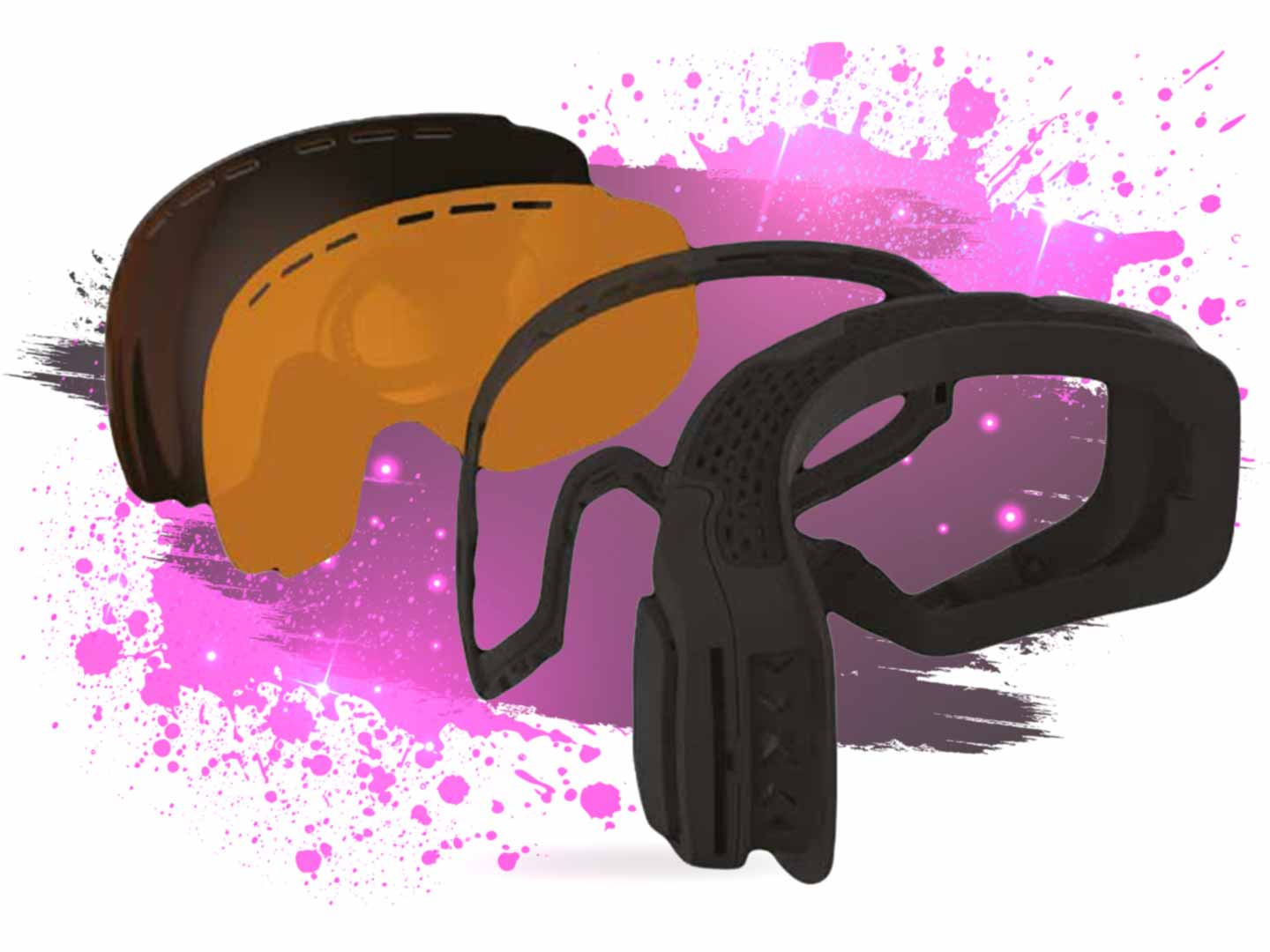
Here's a quick summary of our 19 tips:
- Understand why it happens
- Start your day fresh
- Buy quality ski goggles
- Anti-fog coating
- Double lenses
- Ventilation
- Pair with well-ventilated helm
- Foam padding
- Use a breathable ski mask
- Don't tuck your balaclava
- Don't overdress
- Keep moving
- Store dry
- Cleaning after the day
- Keep your goggles on
- Keep backup extra lens
- Don't wipe the anti-fog layer
- Re-apply anti fog coating
- Upgrade
1. Understand why it happens
So, understanding why fogging happens is the first and most important thing you can do to prevent it. Learn to spot behaviors you are doing that may cause it, even when they aren't listed here or anywhere else.
Fogging occurs when the warm and moist air inside your goggles comes in contact with the cold surface of your lens. This humid air condenses into drops of water that cling to your lens.

How to prevent fogging up of ski goggles
To mitigate fogging, you should aim to:
- Minimize the amount of moisture within the goggles.
- Maintain the temperature on the interior of the goggles as close to the outside temperature as possible.
The anti-fog additives that goggles are treated with now can only absorb a certain amount of moisture. The rest is up to you.
2. Start your day with a dry ski goggle
The most essential and easy tip is to start your day fresh. Starting with a dry ski goggle is like putting fresh underwear on in the morning. You are doing that right? By starting your day with a well dried up ski goggle you will eliminate the first unnecessary moisture.
3. Buy quality ski goggles
The best and most easy way to get rid of fogged up ski goggles, is to buy a well designed goggle. But how do you know to choose a good goggle? we'll explain this with the tips below. If you rather get our recommendation for really good goggles at a fair price. Hit the button below.
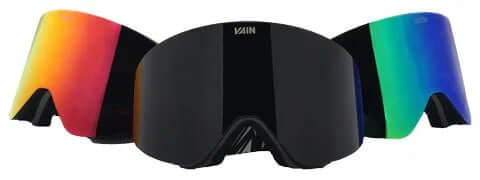
4. Anti-fog coating
This might seem the most logic option there is, and luckily a lot of ski goggles are treated with an anti-fog coating.
What does an anti-fog layer do?
The anti-fog coating is a layer on the inside lens of your ski goggle that will prevent water droplets from forming on your lens. Those droplets will look like what we call fogging up of the lens. Instead the water on the lens becomes a film of water on the lens, which will appear less visible than the droplets.
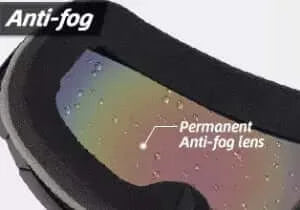
What anti-fog layers are there?
There are multiple types of anti-fog coatings, there are anti fog films, surfactants and hydrophilic coatings.
Anti-fog films
Anti-fog films are most commonly used for ski goggles, where a lens is covered with a transparant film that lowers surface tension and formation of water droplets. These films have a more permanent effect than other treatments.
Surfactants
Surfactants are surface layers that bond with water and form a sealed layer so that there will be no water droplets. Examples of surfactants are rubbing shampoo or soap on your lens and wiping it off without rinsing.
Hydrophilic coatings
Hydrophilic coatings are layers that attract water and dissolve into water so that the water droplets become a film of water instead. These coatings can be applied easily by a spray on the lenses, but on the downside won't last really long.
Did you know anti-fog was developed by NASA?
Anti-fog treatments we're first developed by NASA during their Project Gemini, since then the treatments are commonly used on glass or plastic surfaces for optical use. Examples where you find anti-fog treatments most are: lenses, mirrors, glasses, binoculars, camera lenses and goggles.
5. Double lenses
Double lenses are the second most effective way to eliminate the fogging up of your ski goggle lens. A lot of ski goggles already have a double layer lens, but why is it so effective?

Why is anti-fog prevented by a double lens?
Fog is actually small droplets of water forming on a surface that bend light and limit the sight. The proces is called condensation, where moisture attaches to a surface and becomes fog.
Condensation appears faster and more intense on a surface that has a bigger temperature difference between sides. Ever noticed the ice crystals on your window during winter? By adding an extra lens, the temperature difference is reduced and fog will less likely form on the lens.
6. Ventilation
Ventilation is the third most effective way to prevent fog from forming on your lens. Most goggles have built in ventilation design, some even have hand operated ventilation shafts.

Why is ventilation reducing fog up in a lens?
Simply said, ventilation is reducing the inside temperature of the goggle. By reducing the temperature inside the goggle, the difference between inside and outside the goggle are smaller. Which will lead to a reduced amount of fog building up on the lens.
What is the best ventilation for ski goggles?
The best performing ventilation shafts design will prevent snow from entering in the goggle, which brings a lot of moisture inside. They will also have ventilation on the upper and the bottom side of the goggle so that the air can flow through. And last but not least, a good porous filter will help catch moisture and prevent it from entering the goggles.
7. Pair with well-ventilated helmet
Goggles are only one portion of the puzzle. A well-ventilated ski helmet can help considerably in keeping air flowing and you from overheating. The first indicator of overall ventilation is the total number of vents, with more expensive helmets typically boasting more than budget designs.

Another key differentiation to look for is whether the vents are adjustable. Fixed vents can allow unwanted moisture and cold air inside, while adjustable vents allow you to better regulate temperature by managing output and conditions. Taken together, an effective helmet venting system should direct air from your goggles through intakes to the front and then release the heat out the top and back.
8. Foam padding
Next up is the foam backing, many will wonder why it is important and we will explain.

Does foam backing reduce moister in ski goggles?
The answer is simple: yes, the right foam will reduce moisture from getting into the goggles. A good foam is comfortable and has a full perimeter contact with your face. No gaps where moisture can enter the goggle and fog up on the lens.
Does multiple layer foam help against moisture?
It certainly will as the foams will likely have a better function. For example our Slopesters triple layer foam consist out of a top layer that is comfortable and soft to the face. The second layer is a compression foam so that it will have full perimeter contact to your face. The last foam is a foam with high stretch resistance so that the foam won't come loose from the frame and form gaps.
9. Use a breathable and ventilating ski mask
Many people use a buff or gaiter to warm their neck and cover it over their mouth and nose. The hot and moisture rich air your breathing are sometimes blown into your goggles and end up fogging up your lenses.

It is advisable to use a breathable fabric buff or gaiter so that the moist won't result into a fog-up of your lenses. There are also magnetic attachable ski masks for ski goggles available. These will ensure a good ventilation while wearing a face mask.
10. Do not tuck your buff, balaclava or neck warmer
When it gets cold out there, it's likely to tuck your neck warmer under your goggles. This does make you warm, but it isn't a good idea.
The air your breathing out is moist and warm. The perfect air for fogging things up. If this flows into your goggle, they are going to fog up really quick.
The best way to prevent such event from happening is to leave some space for your ski goggle vents. it's as easy as that!
11. Do not overdress
There is no doubt that the weather outside can be cruel, but do not make the mistake of dressing too warm. Dressing appropriately for the day is the best way to prevent your goggles from fogging up. The more heat you emit from your body through the neck openings, the less heat is retained in the goggles, which will eventually lead to fogging.
12. Keep moving
This one is simple and you may have experienced it sometimes. When your skiing there is a lot of air flowing through your ventilation, once you stop moving your lens will start to fog up. This means there is too much fog inside the goggle and the lens will keep fogging up every time you stop. Advise is to cry the goggle or keep moving!

13. Store your goggles dry
One simple and effective way to reduce moisture is to let your goggles dry for some time after use and store them in a dry space. Do not blow them dry with a hot air dryer as this might destroy anti-fog coatings and worsen the effect. Letting it sit at room temperature over night should be enough to dry.

14. Clean your goggles after a day of skiing
Simple but effective, keeping your ski goggles clean or cleaning them after use and letting them dry over the night will have a great effect. No sticky fingers or other sight blocking pollution will stay.
Don't clean your anti-fog layer with chemicals or soap. It's best to wipe them dry with a soft cloth or rinse them with water. An example of a soft cloth are the storage pouches that come with most of the ski goggles.
15. Keep your ski goggle on your head
When you enter the slopes on the morning and put on your goggles, there will be no moisture inside. Putting it off and placing it on your helmet will increase moisture as the moisture on the helmet will now freely enter the goggle and foam. Advice is to do this as less as possible to keep the moisture out as long as possible.
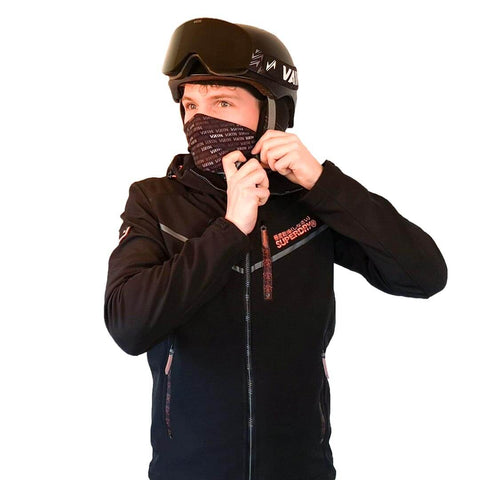
16. Keep a backup pair of extra lenses
This might be a more expensive option, but is definitely one of the best options there is. Having an extra lens means a fresh new coating and a dry start all over again. The dry lens will take some time to get fogged-up and is an instant improvement.
Most people that have a spare lens will use one for the morning and use the second one after lunchtime.
17. Don't wipe the anti-fog layer
If you're willing to get moisture off your lenses, resist the temptation of using your gloves. And never wipe the inside of the ski goggle lens. You will wipe of the manufacturers anti-fog coating. Which will result in even more fogging up of the lens. You might even end up ruining them by scratching or getting rid of the built-in anti-fog coating.
Instead, carry a soft microfiber cloth around for emergency cleanings. That is the best way to keep your goggle lenses moist free.
18. Re-apply anti-fog coating with anti-fog spray
If you have an old pair of goggles that fog up easily. Just buy an anti-fog spray and re-apply to the goggle to prevent fogging up again.
19. Know the important features and upgrade
If you're ready for a new pair of ski goggles, be sure to know what the key features are. With the tips above you will be sure to find a great goggle. To help you a bit we will sum key features below:
- Optimal ventilation which keeps the temperature consistend inside and outside.
- Double pane lenses that isolate the air layers.
- A good anti fog treated lens which keep your goggle from fogging up.
Good luck with your search!
1 comment


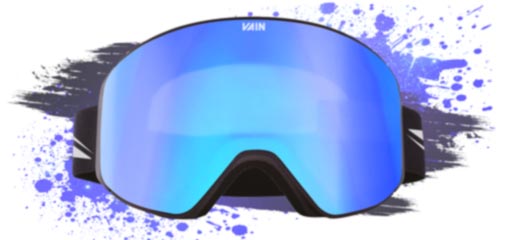
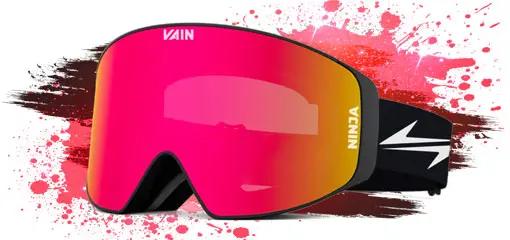
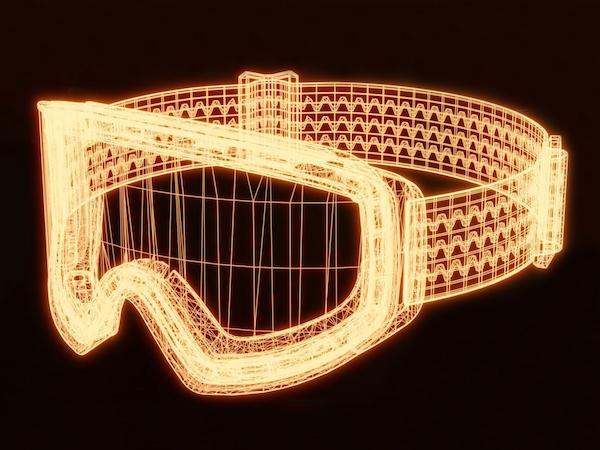
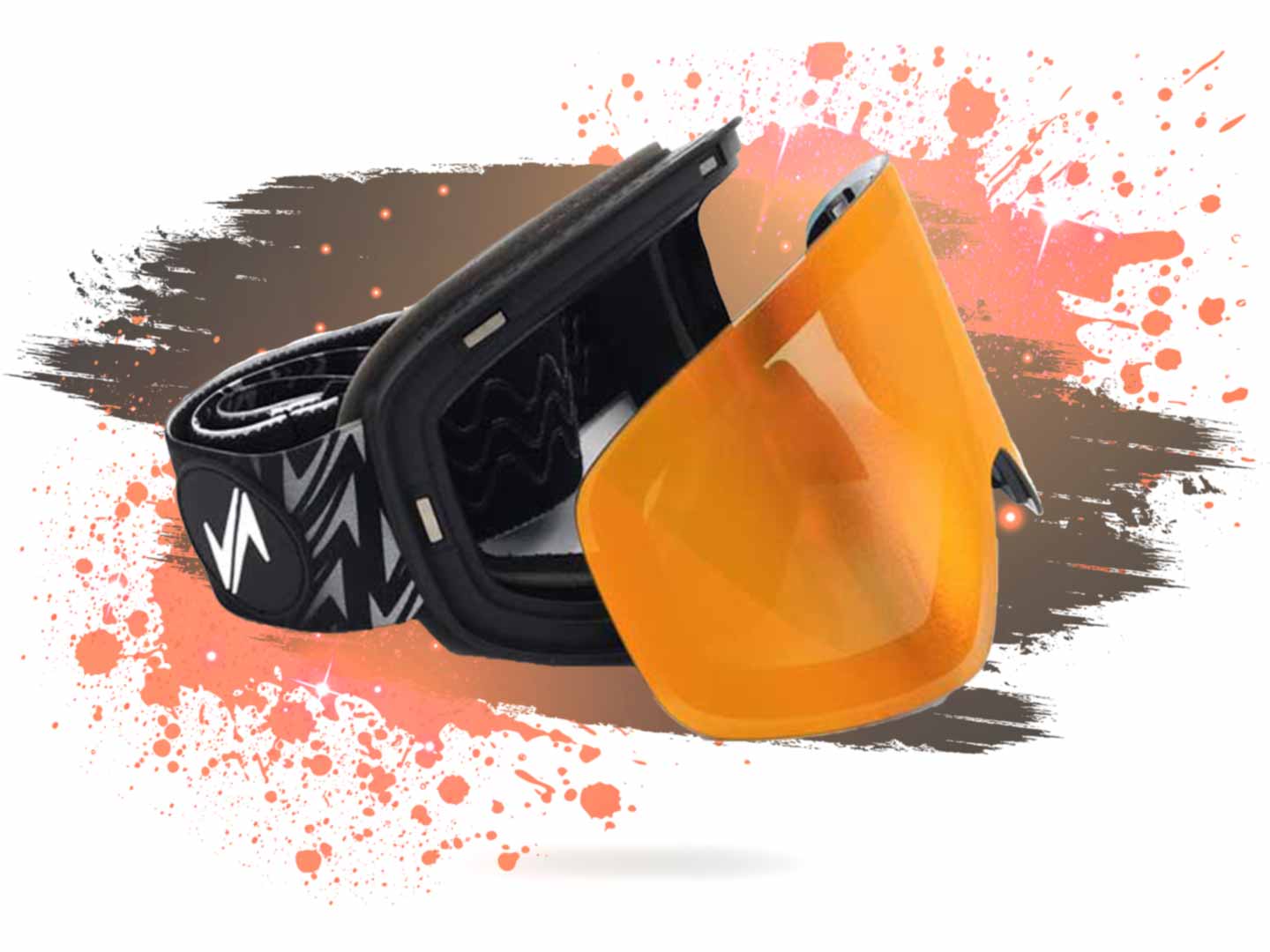
Thanks for the tips, appreciate them!